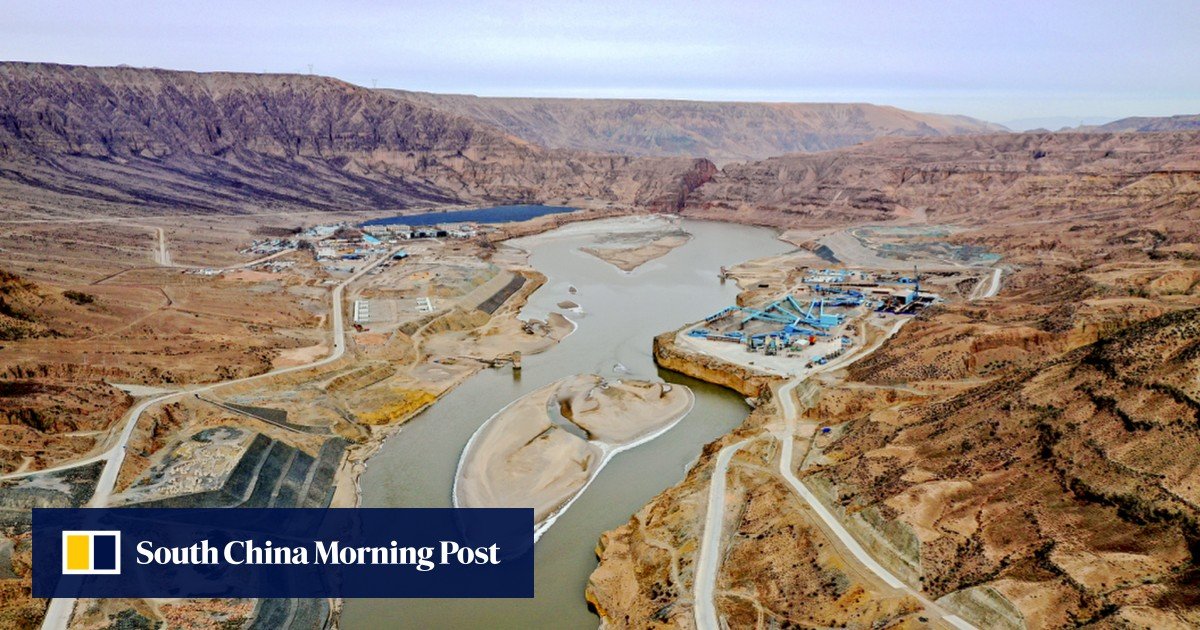I doubt they’ll be 100% successful, but the fact they’re even researching this and likely going to fund it is huge compared to what the west is doing. The US is funneling millions into Reddit Musk’s pocket to build an exclusive car tunnel and letting Texans burn and freeze every 6 months
So they've already built dams with the system partially. They were able to build a dam at twice the speed and quality (and far less accidents) on previous tries so the party was like 'fuck it do it all this time its way better'. For example, one dam nearly the same size and material as the Three Gorges dam only took 4 years to build versus the norm of 9-10 years.
I dug into it really hard last time it was posted. The tech is phenomenal and really well made and innovative. Its unsurprising to me that they're doing it full blown now. China considers stuff like dams and nuclear plants to be of the highest priority so they threw all their funds at it. Theres even plans to use it on nuclear plants to speed up construction without sacrificing quality. So the so often quoted 'ten year' build speed for nuclear plants will be closer to 2-4 years provided this project goes well.
The biggest innovations/improvements of this system over manual labor are that human labor had huge slowdowns on the logistics side a lot of times, but the centralized planning structure of the CPC greatly speeds things up when they can simply tell the robots to pick something up at A and drop it off at B. There were apparently many times where humans would put stuff in the wrong spots and it would completely fuck up the speed of construction by years because of how many human errors build up over time even with experienced professionals.
edit: it should also be noted that while all/most the work is automated, they have a bunch of lookout people that reverify the visual situation for robots just in case their optics or mechanics are fucked up. it should be noted that this is the more expensive way of doing things, but it happens faster and with higher quality. which for socialist construction, is incredibly important.
Of course, when the capitalist media reported on the partially automated dams, they moaned about how quick construction was and how unsafe it would be without any evidence that there are issues
:some-controversy: hehehehehe YES
what the fuck are we supposed to have gulag people do if we automate public works, make them all do art?
@Kanna standing at the mouth of a mine with an AK like “let’s see some haikus people!”
The "Artificial Intelligence" term used here is doing a lot of work to obscure what they're actually talking about. Are they just talking about some kind of path-finding behavior? Also why does SCMP have a paywall now :ooooooooooooooh:
edit: Ok, the article says it's using AI for scheduling tasks which sounds pretty cool. But it also sounds like it's not necessarily "AI", just more automated coordination between things.
https://web.archive.org/web/20220519171759/https://www.scmp.com/news/china/science/article/3176777/chinas-robot-built-3d-printed-dam-ready-2-years-scientists
article
According to the project’s lead scientist Liu Tianyun, in a paper published in the peer-reviewed Journal of Tsinghua University (Science and Technology), dam construction and 3D printing are “identical by nature”.
After years of development testing, 3D print technology for large, filled infrastructure had matured enough for mass applications and would “free humans from heavy duty, repetitive and dangerous work”, he said.
Liu, an associate researcher with the state key laboratory of hydroscience and engineering at Tsinghua University, and his team came up with the idea of “printing” large-scale building projects about 10 years ago.
They thought an entire construction site could be turned into a giant printer, with a large number of automated machines working seamlessly together as different components.
SCMP Global Impact Newsletter
By submitting, you consent to receiving marketing emails from SCMP. If you don't want these, tick here
The 3D printer was initially developed as a less wasteful way to manufacture components from precious materials. Printing – or adding – materials produces less waste than cutting and grinding.
Since then, some architects have started to apply the technology to buildings, although projects have so far been small. The first 3D-printed office building, the Dubai Future Foundation headquarters, stands at just 6 metres (20 feet).
Chinese civil engineers are no strangers to AI, which was used to build Baihetan, the world’s second-largest dam, in just four years. But until now, it has mainly played a coordinating role in projects.
Critics query green credentials of world’s second-largest hydroelectric dam after speedy build
Critics query green credentials of world’s second-largest hydroelectric dam after speedy build
Testing of the technology in previous construction projects suggested smart machines could do a better job than humans, “especially in some harsh and dangerous environments”, said Liu and his colleagues.
Liu did not immediately respond to questions about Yangqu dam’s progress, but according to state media reports work started at the end of last year in Hainan Tibetan autonomous prefecture, Qinghai province.
After “slicing” a computer model of the dam into layers, the AI at the heart of the project would assign a team of robots to add one layer at a time, the paper said.
Unmanned excavators will be able to identify and load materials from a stockpile yard into a fleet of automated trucks, some powered by electricity.
Some of the automated machinery that will be used in the 3D-print construction of Yangqu dam. Photo: Tsinghua University
Some of the automated machinery that will be used in the 3D-print construction of Yangqu dam. Photo: Tsinghua University
Following an optimised route calculated by the central AI, the trucks will deliver the right materials to the right locations, at the right time, to be located by robotic bulldozers and pavers and turned into a layer of the dam structure.
Automated rollers press the added layer until it is tight and firm, but they are also equipped with sensors. The central AI uses these to monitor build quality by analysing ground vibration and other data.
Breakthroughs in AI technology, including deep reinforcement learning, mean the machines can now recognise nearly all objects on site, deal with uncertainties in a changing environment, and perform various tasks flexibly, according to the paper.
They also do not make human errors. Liu said truck drivers often delivered materials to the wrong location, while shocks and strong vibration prevented roller operators from maintaining a perfectly straight path. And most workers were unable to read the technical design papers correctly, he added.
But where the machines shine is their ability to work in a life-threatening environment, without getting headaches from a lack of oxygen or exhausted after working continuously for 24 hours, according to the researchers.
Not all jobs in the dam’s construction will be handled by machines. The team said the mining of fill-rocks from nearby mountains would be done manually because of the task’s complexity.
Liu’s team said the technology could also be used in other infrastructure projects, such as airport and road construction.
“AI based on knowledge, information and data is a new tool … that will shape our future,” they said.
A Nanjing-based civil engineering scientist, who asked not to be named because of his role in the technical evaluation of some major infrastructure projects, said there were limits to 3D print technology but it would find more uses in the future.
“It cannot print a structure consisting of different materials, such as reinforced concrete made of steel and cement,” the scientist said.
“An army of construction robots can offset the sharp decline of manual labour caused by low birth rates,” he added.
Isn't dam construction still super dangerous? If so, that makes making robots do it even better.



